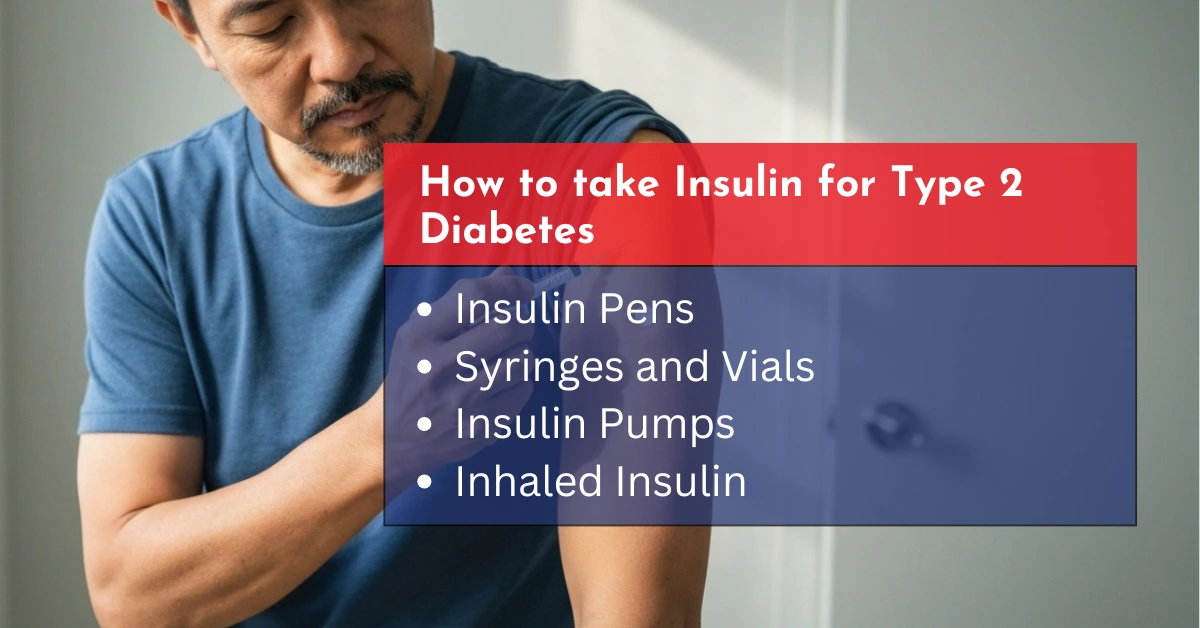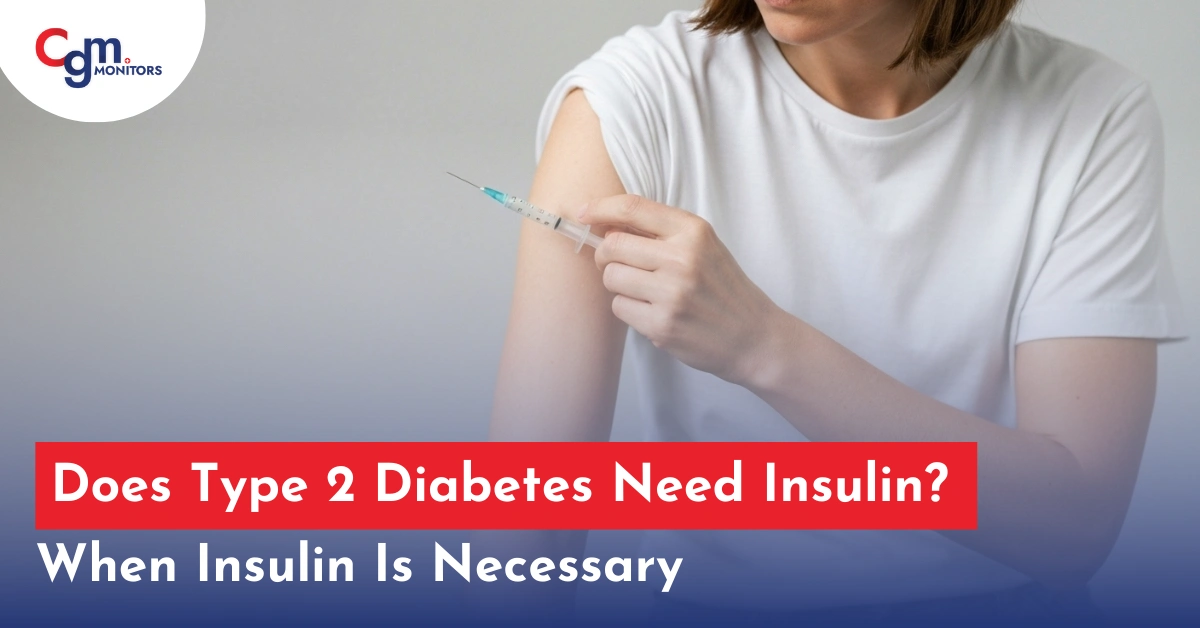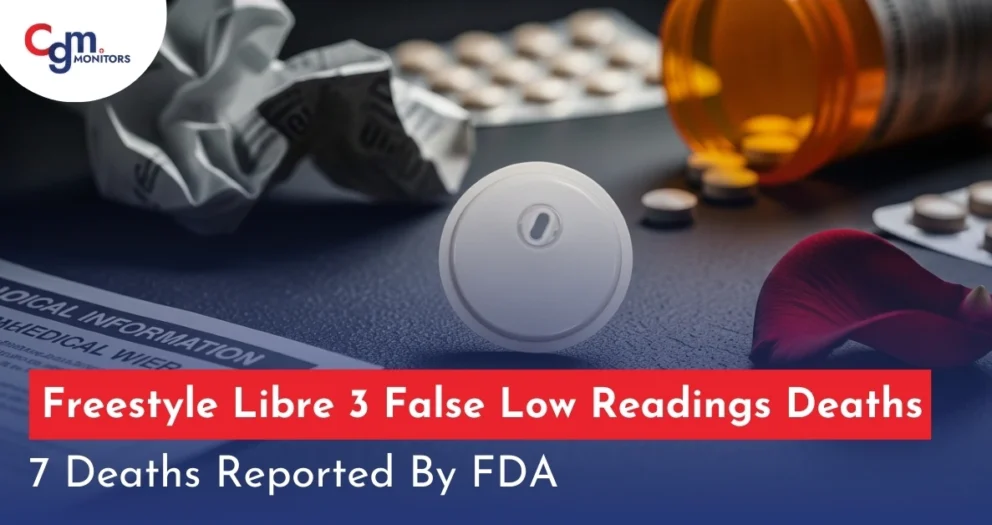Table of content
- Type 2 Diabetes and Insulin Therapy: Key Insights
- Doctor’s Insight on When to Use Insulin for Type 2 Diabetes
- Types of Insulin for Type 2 Diabetes
- How To Take Insulin for Type 2 Diabetes
- Pro Tip! Make Insulin Injections Easier
- Key Benefits of Insulin for Diabetes Management
- Common Side Effects of Insulin Overdose
- Type 2 Diabetes Management Guidelines
- Conclusion
- References
- FAQs
Does Type 2 Diabetes Need Insulin? Discover how disease progression influences the need for insulin therapy—and why it becomes essential in some cases. Living with type 2 diabetes means your body’s ability to handle sugar becomes compromised as it progresses. Not every person with type 2 diabetes requires insulin; if your medications are working, there’s no need to worry. Still, a minor percentage (1 in 4) eventually needs it when oral medications can no longer maintain target blood glucose levels.
So, yes, people who have type 2 diabetes can be put on insulin pumps. Here, we’ll cover why this happens and how monitoring with CGM monitors is vital to stay updated about your condition. The need for prompt insulin therapy is vital in these instances to prevent long-term health risks due to poorly controlled Type 2 Diabetes. Let’s start!
Type 2 Diabetes and Insulin Therapy: Key Insights
In type 2 diabetes, the pancreas does produce insulin, but the body’s cells become immune to its effects (not in a good way). The progression of Type 2 diabetes leads to increased blood glucose, especially in patients with extra-abdominal fat or fatty liver. The natural insulin output declines; that’s when lifestyle changes and oral medications also start losing their effects, and insulin therapy for type 2 diabetes is needed. It’s introduced to restore glucose control and is done long-term or short-term with consistent monitoring.
Needing insulin isn’t a sign of failure; it is the next step in safe, evidence-based diabetes care. It’s a tool to help stabilize blood sugar and lower the risk of long-term complications.
Doctor’s Insight on When to Use Insulin for Type 2 Diabetes
Many think type 2 diabetes doesn’t need insulin because doctors usually try non-insulin treatments first. The reason many people believe that type 2 diabetes doesn’t require insulin is that doctors don’t rush into insulin. They only prescribe it when it becomes impossible to maintain glucose levels. Here’s how healthcare providers typically decide:
| Clinical Scenario | Insulin Needed? |
| A1C > 9% despite meds | Likely |
| A1C > 10–11% | Almost always |
| Fasting glucose > 250 mg/dL | Yes |
| Random blood sugar > 300 mg/dL | Yes |
| Severe symptoms or weight loss | Yes |
| Temporary stress (illness, surgery) | Possibly short-term |
Types of Insulin for Type 2 Diabetes
Different types of insulin are used to manage blood sugar at various times of day, and the right combination. The dosage and type depend on your treatment goals, lifestyle, and glucose patterns.
1. Long-Acting or Intermediate-Acting Insulin (Once or Twice Daily)
Insulin use in type 2 diabetes often begins here, and doctors follow insulin dosage guidelines for type 2 to adjust based on weight, glucose readings, and daily activity levels. This type of insulin, often called basal insulin, regulates blood sugar levels between meals and during sleep. You’ll be advised to get insulin once or twice a day, depending on needs and blood glucose levels.
2. Basal-Bolus Combination: Long-Acting Plus Mealtime Insulin
If blood sugar is not controlled with basal insulin, physicians start short-acting or rapid-acting insulin. This strategy is called a basal-bolus plan, and you get insulin before a meal to copy the human body’s natural insulin rhythm by covering both fasting and post-meal glucose rises. Rapid-acting insulins begin working within 15 minutes and are adjusted based on carbohydrate intake, blood sugar readings, and the time of day. The maximum daily insulin dose for type 2 diabetes varies.
3. Biphasic or Mixed Insulin (1 to 3 Times Daily)
Some people with type 2 diabetes also benefit from a premixed insulin, also known as biphasic insulin. It’s like intermediate and rapid-acting insulin in one injection. This approach is taken once to three times daily before meals. Although it offers fewer dosing adjustments, it simplifies treatment by reducing injection frequency. Studies estimate a significant percentage of type 2 diabetics on insulin eventually transition to premixed solutions for consistency and convenience.
How To Take Insulin for Type 2 Diabetes
There are different ways to take insulin, and the method is recommended by your doctor. What matters most is choosing an option you can use each day.
- Insulin pens: These come prefilled and are easy to use. Ideal for precise dosing and are more discreet than traditional syringes.
- Syringes and vials: A more traditional method that is necessary for people requiring flexible dosing or concentrated insulin types.
- Insulin pumps: These wearable devices provide steady background insulin and optional meal boluses, reducing the need for multiple daily injections.
- Inhaled insulin: A fast-acting option taken at mealtime, often used alongside a separate long-acting insulin for full coverage.

Pro Tip! Make Insulin Injections Easier
Use insulin pumps to remove the need for multiple daily injections. These devices are worn on the body and deliver insulin automatically throughout the day, mimicking the way a healthy pancreas works. These portable insulin systems offer improved comfort and more precise regulation. Explore options like CGMs or pumps, platforms such as CGM Monitors. See if it’s covered by insurance to save money!
Key Benefits of Insulin for Diabetes Management
When your body can’t make or use insulin well enough on its own, using insulin as medication directly replaces what’s missing. It protects organs and helps you stay well long-term.
- Moves excess sugar out of your bloodstream and into your cells, where it can be used for energy
- Reduces how much sugar your liver releases, helping prevent high fasting glucose
- Keeps blood sugar stable between meals and overnight, improving daily control
- Decreases the likelihood of major complications, including kidney harm, loss of eyesight, stroke, and nerve problems
- Allows flexibility in eating times and food types when managed properly
- Supports healing and lowers the risk of infection in people with poorly controlled diabetes
- Helps reduce symptoms of fatigue, blurry vision, and urination
- Can be changed with different insulin types, depending on how your body responds
Common Side Effects of Insulin Overdose
Insulin works effectively, but if too much is taken, blood sugar can drop too low. Insulin overdose side effects are most often linked to missed meals, overcorrecting with insulin, or drinking alcohol without eating.
The most common reaction is hypoglycemia, which can cause dizziness, weakness, sweating, confusion, or even loss of consciousness if left untreated
- Skipping food or being more active than usual without adjusting insulin increases the risk
- Weight gain is possible in the first few months, especially if extra calories are added to prevent lows
- Repeated use of the same injection site may cause fat tissue to thicken or shrink, affecting how insulin is absorbed
- Injection areas may feel sore, itchy, or swollen, but rotating sites can reduce this
- Low blood sugar during sleep is a real concern. Checking blood sugar before bed in type 2 diabetes helps catch problems early
- Severe lows are medical emergencies and need fast-acting sugar like glucose tabs or juice
If side effects feel unsafe, contact your diabetes care team immediately.
Type 2 Diabetes Management Guidelines
Managing type 2 diabetes requires a combination of factors. Treatment plans are structured across four pillars: nutrition, physical activity, pharmacologic therapy, and glucose monitoring. Below is a breakdown of current guideline-based strategies used in clinical practice.
Diet
- Focus on structured meal planning, like healthy snacks.
- Use ADA’s plate method that includes half non-starchy vegetables, one-quarter lean protein, and one-quarter complex carbohydrates.
- Meal plans developed by a dietitian help regulate post-meal glucose without nutritional compromise.
- Carbohydrate counting or consistent carb intake patterns improve medication timing and dosing accuracy.
Exercise
- Home exercise is best for maintaining your type 2 diabetes. It is recommended to do a minimum of 150 minutes per week of moderate aerobic activity, spread over at least 3 non-consecutive days.
- Add resistance training twice weekly to improve insulin sensitivity and maintain muscle mass.
- Structured exercise supports fasting glucose reduction and lowers A1C in the long term.
- Activity should be paired with glucose monitoring, especially in patients on insulin or sulfonylureas.
Medication
- Begins with oral medications for diabetes, such as metformin or DPP-4 inhibitors.
- Non-insulin treatment options include GLP-1 receptor agonists, SGLT2 inhibitors, thiazolidinediones, and others.
- Escalation to type 2 diabetes insulin treatment may occur as beta-cell function declines.
- Treatment is adjusted based on A1C, renal function, cardiovascular risk, and weight profile.
Monitoring
- Self-measurement of blood sugar (SMBG) is important for safely modifying insulin or medication.
- CGMs offer alternative monitoring methods for eligible patients requiring frequent checks or tighter control.
- CGM Monitors provides clinically supported devices that help reduce missed hyperglycemia and simplify decision-making through Freestyle Libre 2 plus or Dexcom G7.
- Glucose checks before meals and before bed are standard in insulin-based plans to avoid overnight hypoglycemia.
Conclusion
Understanding “Is insulin necessary for type 2 diabetes?” starts with recognising that this condition progresses differently in each person. As the progression of type 2 diabetes continues, lifestyle changes and oral medications may not always be enough. In those cases, insulin becomes part of an evolving care plan. Do not worry, as it can be controlled, and insulin is simply another treatment plan to preserve long-term health in a progressive disease. Buy CGM devices to monitor your blood sugar and get timely insulin pumps without leaving your home!
References
https://www.webmd.com/diabetes/diabetes-insulin-dosages
FAQs
Can an insulin overdose cause a heart attack?
Insulin overdose triggers dangerously low blood sugar, so it can increase the risk of a heart attack in those with cardiovascular disease.
Is type 2 diabetes hereditary?
Yes, most of the diagnosed type 2 diabetes runs in families.
Do people with type 2 diabetes ever need insulin?
Yes, some do, especially if other treatments fail to keep blood sugar within target range or the pancreas slows down over time.
Can people with type 2 diabetes live without insulin?
Many manage with lifestyle changes and oral medications, but insulin may be required if blood sugar gets uncontrolled.
What’s the difference between type 1 and type 2 diabetes?
Type 1 diabetes results in no insulin production, while type 2 diabetes still involves insulin creation but poor utilization.
What happens if a person with type 2 diabetes does not take insulin?
Not taking insulin, when blood glucose rises excessively, can cause permanent damage to the heart, eyes, kidneys, and nerves.
Can I take insulin as a pill?
No, insulin breaks down in the stomach, so it must be injected or inhaled to enter the bloodstream effectively.
How should I store insulin?
Keep unopened insulin refrigerated; once opened, store it at room temperature and use it within 28 to 30 days.







Write a comment
Your email address will not be published. All fields are required